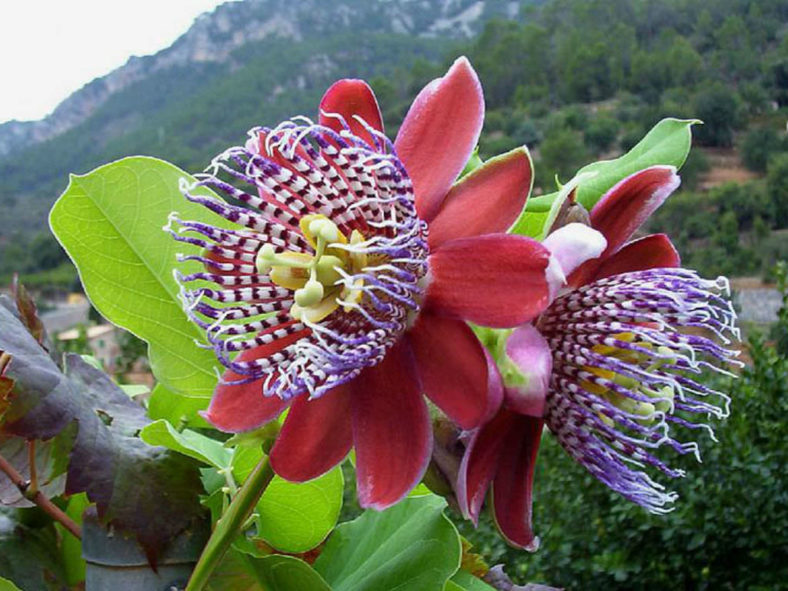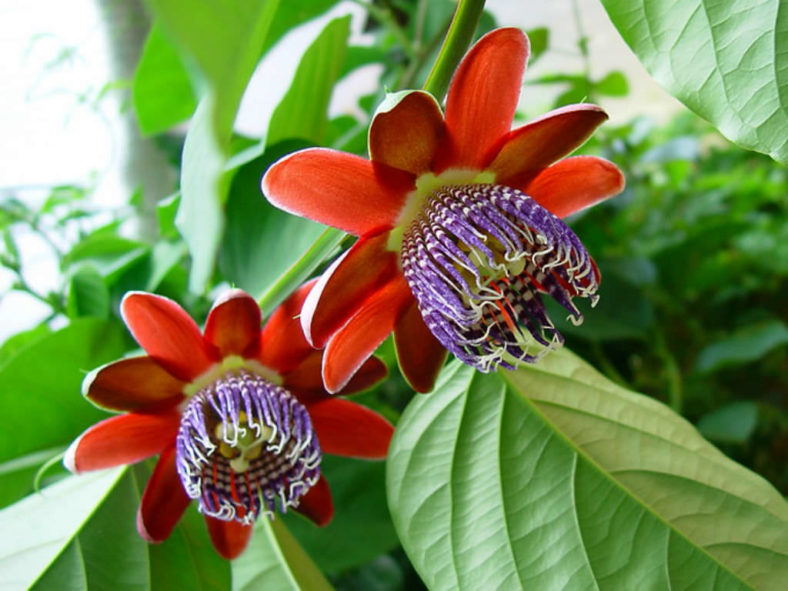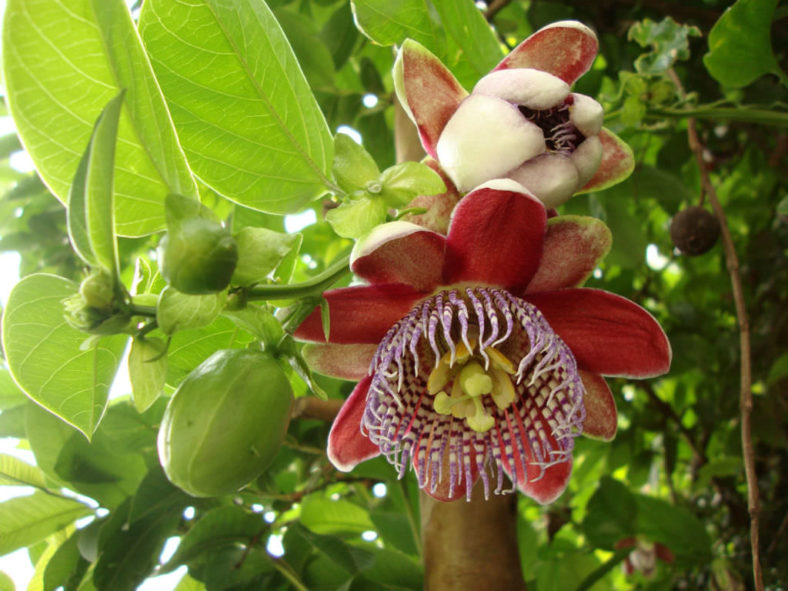Scientific Name
Passiflora alata Curtis
Common Name(s)
Winged-stem Passion Flower, Fragrant Granadilla, Winged Passion Flower
Synonym(s)
Passiflora latifolia, Passiflora phoenicia
Scientific Classification
Family: Passifloraceae
Genus: Passiflora
Origin
Passiflora alata is native to the Amazon, from Peru to eastern Brazil.
Flower
Color: Red, purple and white
Bloom Time: Late summer or early fall
Description
Passiflora alata is an evergreen vine with 4-winged stems and large 3-lobed leaves. It grows up to 20 feet (6 m) tall. Leaves up to 6 inches (15 cm) long and 4 inches (10 cm) wide.
The fragrant flowers are up to 4 inches (10 cm) in diameter, with red, curved tepals and a prominent fringed corona in bands of purple and white, giving the appearance of stripes. It usually blooms around late summer or early fall. The edible fruits are egg-shaped, yellow to bright orange, up to 6 inches (15 cm) long, and up to 4 inches (10 cm) in diameter.

Hardiness
USDA hardiness zones 7a to 10b: from 0 °F (−17.8 °C) to 40 °F (+4.4 °C).
How to Grow and Care
Their vibrant colors and heady fragrance make the Passion Flower a welcome addition to any garden. Unfortunately, most Passion Flower plant species can't overwinter in many gardens in the United States because of their origins. However, a few will survive up to USDA plant hardiness zone 5. Most varieties will grow in Zones 7-10.
Because they are vines, the best place for growing Passion Flower is along a trellis or fence. The tops will be killed off during winter, but your Passion Flower plant will return with new shoots in the spring if you mulch deeply. Since growing Passion Flowers can reach 20 feet (6 m) in a single season, this dieback will help keep the vine under control.
Passion Flowers need full sun and well-drained soil. Two applications of a well-balanced fertilizer per year, once in early spring and one in midsummer, are all the Passion Flower care you will need.
See more at How to Grow and Care for Passion Flowers.
Links
- Back to genus Passiflora
- Plantpedia: Browse flowering plants by Scientific Name, Common Name, Genus, Family, USDA Hardiness Zone, or Origin
Photo Gallery
Click on a photo to see a larger version.




